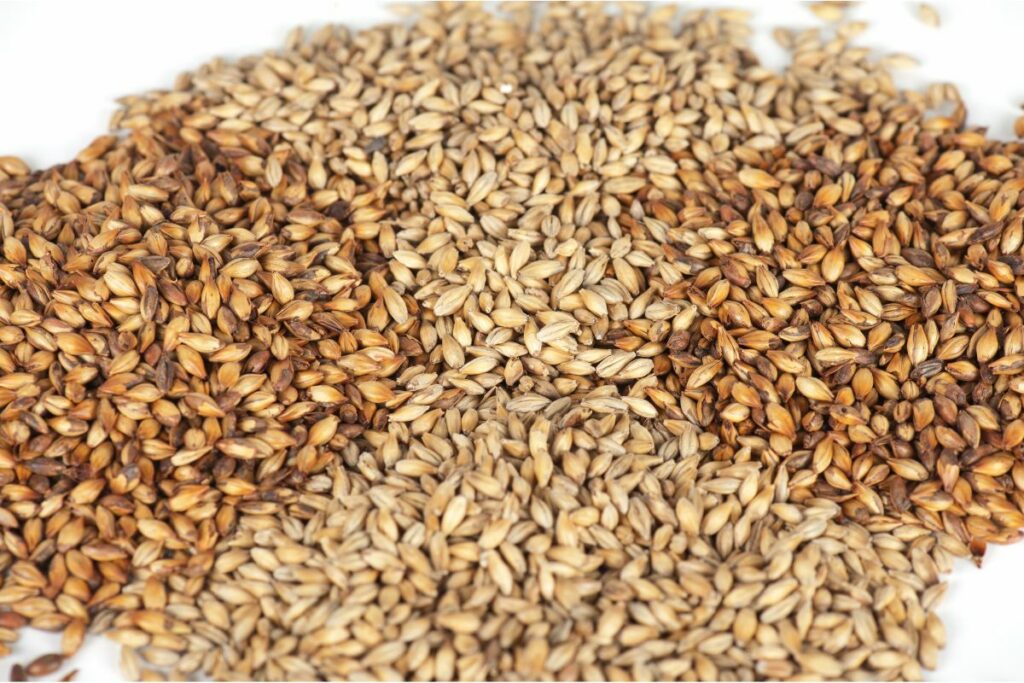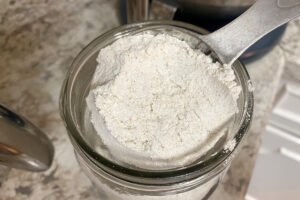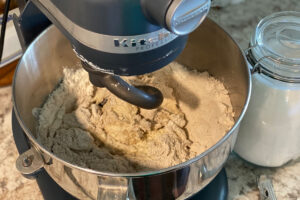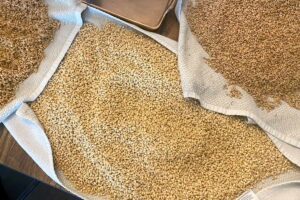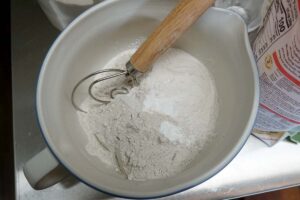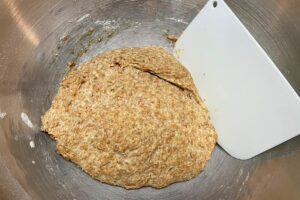Malted grains are a great source of protein, fiber, and B vitamins. They also contain some carbohydrates, which can be converted into energy by the body.
These types of grains are usually found in cereals like oats or wheat and can take a number of different forms including flakes, puffs, or even granules.
We took a closer look at malted grains, including their nutritional benefits and how to cook them.
What are malted grains?
Malted grains is a grain that has undergone a process called malting, which involves soaking the grain in water to cause the grains to germinate, or sprout. The germination process is then quickly stopped and the grain is dried out.
This controlled germination results in biochemical changes within the grain, developing enzymes that can break down the grain’s starches into sugars. These sugars are crucial for fermentation processes in brewing and baking.
Malted grains are primarily used in two different industries:
- Brewing: In the brewing industry, malted grains are a key ingredient in the production of beer. The malted Barley is crushed to expose the inner kernel and its enzymes. The malt is then mixed with water in a process called mashing, where the enzymes break down the starches into fermentable sugars. The resulting sugary liquid, called wort, is then boiled, hopped, cooled, and fermented to produce beer
- Baking: In baking, malted grains or malt extract can be added to bread and other baked goods to enhance flavor, color, and texture. Malted Barley extract, for instance, is used to give a deep, rich color to bread crusts and to provide a slightly sweet and complex flavor
The most common malted grains
The most common grains used for malting include Barley, but other grains like Wheat, Rye, and Oats can also be malted for specific purposes.
- Barley: Barley is one of the oldest cultivated cereal crops and has been used for thousands of years as a food staple. It’s often referred to as “the staff of life” because it contains all eight essential amino acids needed by the human body. Barley is rich in dietary fiber, magnesium, potassium, manganese, phosphorus, copper, zinc, iron, vitamin E, folate, thiamine, riboflavin, niacin, pantothenic acid, biotin, calcium, sodium, and selenium.
- Rye: Rye is another ancient grain that was first domesticated around 10,000 BC. Like Barley, Rye is an excellent source of nutrients, including minerals such as iron, calcium, phosphorus, and magnesium. It’s also high in fiber, making it a good choice for those looking to lose weight.
- Oats: Oats are a nutritious whole grain that’s packed with antioxidants and other important nutrients. Oats are gluten-free, so they’re a great option for people who suffer from celiac disease or gluten intolerance. They also offer a good source of soluble fiber, which helps lower cholesterol levels.
- Wheat: Wheat is the most popular grain on Earth, accounting for over half of global production. Wheat is a complete protein containing all eight essential amino acids, plus many other nutrients. It’s a good source of dietary fiber, folic acid, vitamin D, vitamin B6, and iron.
How are malted grains processed?
Malted grains are processed by soaking them in water, then drying them out using heat. During this process, the grains undergo a fermentation process called saccharification.
Saccharification occurs when enzymes break down complex sugars into simple sugars, allowing the grains to ferment and produce alcohol. This type of processing makes malted grains easier to digest and absorb. In addition, the process creates a softer texture and richer taste. The full malting process is:
- Steeping: The grains are thoroughly cleaned and then soaked in water to allow them to absorb moisture and begin the germination process. This usually takes place in large tanks. During this phase, the grains take in water and start to swell and sprout (which is what you think it is–tiny green sprouts come out of the grain as if it’s trying to grow a new plant)
- Germination: The soaked grains are then spread out on a malting floor or in specialized germination boxes. As the grains continue to germinate, or sprout, enzymes are activated within them. These enzymes are responsible for breaking down the grain’s stored starches into simpler sugars, which are essential for fermentation
- Germination control: To prevent excessive growth of the sprouts and to ensure even development of enzymes, the grains are periodically turned and cooled. This helps maintain a consistent temperature and moisture level throughout the germination process
- Kilning: Once the grains have reached the desired level of enzyme development, germination is stopped by drying them in a kiln. The kilning process also serves to remove excess moisture from the grains. The temperature and duration of kilning can influence the flavor, color, and characteristics of the malt
- Modification: The extent of modification refers to how much of the grain’s starches have been converted into sugars during germination. Different levels of modification result in different types of malt, each with unique qualities suited for specific purposes, such as brewing or baking.
- Roasting (optional): In some cases, malted grains may undergo additional roasting to develop specific flavors and colors. This step is commonly used for specialty malts used in brewing
After the malting process is complete, the malted grains can be used for various purposes. In brewing, the malt is typically milled to expose the inner kernel, and the crushed malt is mixed with water to create wort. In baking, malt extract or malted grains can be added to dough to enhance flavor, color, and texture.
Which malted grains should you buy?
There are several types of malted grains available today. Here are some of the best options:
| Nutrient (per 100g) | Barley (Malted) | Rye (Malted) | Wheat (Malted) | Oats (Malted) | Corn (Malted) | Sorghum (Malted) |
|---|---|---|---|---|---|---|
| Calories | 354 kcal | 348 kcal | 364 kcal | 389 kcal | 375 kcal | 361 kcal |
| Carbohydrates | 78.3 g | 72.5 g | 76.3 g | 62.5 g | 85.6 g | 82.1 g |
| Protein | 10.3 g | 8.6 g | 10.7 g | 11 g | 8.2 g | 11.3 g |
| Dietary Fiber | 15.6 g | 8.4 g | 11.3 g | 8.5 g | 7.3 g | 6.3 g |
| Fat | 1.2 g | 1.7 g | 1.8 g | 6.9 g | 3.9 g | 3.3 g |
| Vitamins & minerals | ||||||
| – Vitamin B6 | 0.3 mg | 0.2 mg | 0.4 mg | 0.1 mg | 0.2 mg | 0.2 mg |
| – Folate | 19 mcg | 16 mcg | 37 mcg | 56 mcg | 42 mcg | 42 mcg |
| – Iron | 2.5 mg | 1.6 mg | 4.2 mg | 4.7 mg | 2.7 mg | 4.4 mg |
| – Magnesium | 97 mg | 121 mg | 166 mg | 177 mg | 37 mg | 178 mg |
| – Phosphorus | 242 mg | 359 mg | 381 mg | 523 mg | 278 mg | 283 mg |
| – Potassium | 452 mg | 366 mg | 407 mg | 429 mg | 363 mg | 363 mg |
| – Zinc | 2.8 mg | 3 mg | 2.5 mg | 3.7 mg | 2.1 mg | 2.7 mg |
1. Barley malt
Barley malt is made from malted barley. This type of malt is commonly used in beers and ales. The color of barley malt ranges from light brown to dark amber.
The advantages of barley malt include:
- Low glycemic index: One of the main advantages of barley is that it has a low glycemic index (GI). A low GI means that your blood sugar will not spike after eating foods made with barley. Low GI foods help you avoid insulin spikes, which can lead to unwanted fat storage
- High fiber content: Barley is a good source of dietary fiber, which may help reduce cholesterol and prevent heart diseases
- Vitamins and minerals: Barley contains more than 10% of the daily value of magnesium, copper, manganese, phosphorus, zinc, and selenium. These elements play an important role in bone health, immune system function, energy metabolism, and cardiovascular health
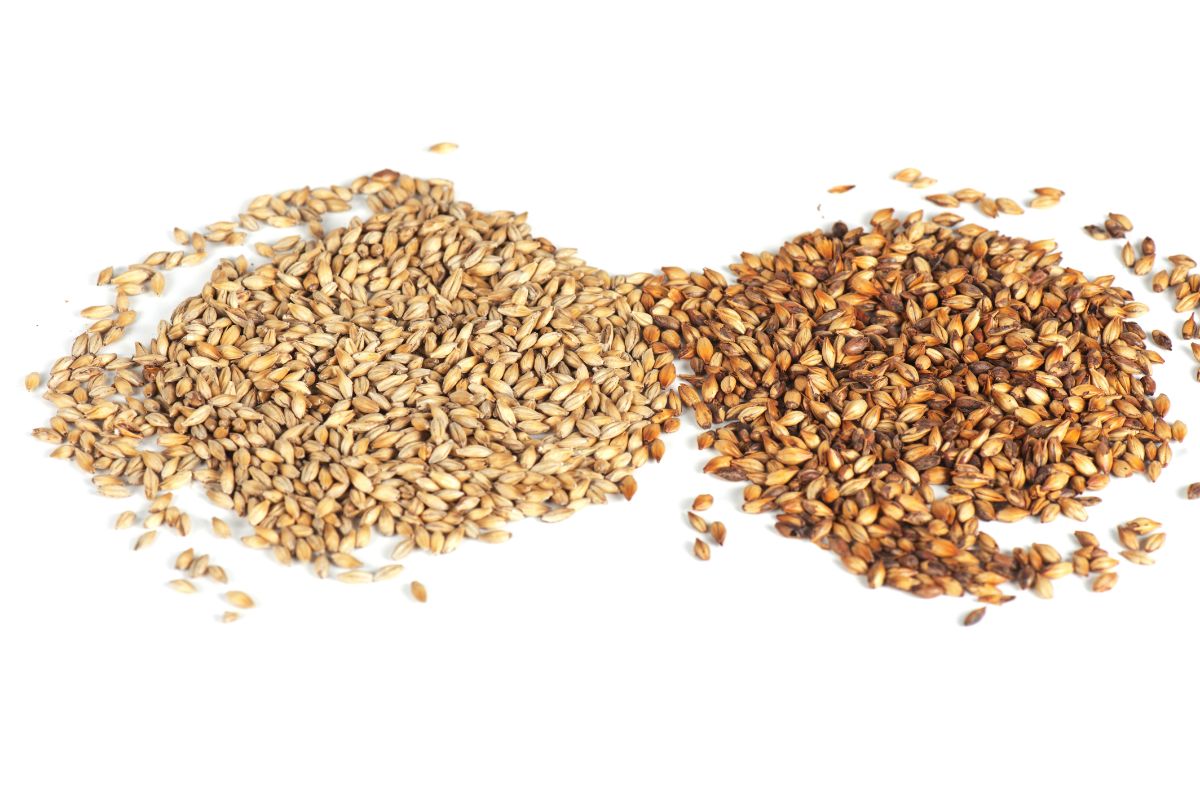
2. Rye malt
Rye malt is made from malted rye. This type of malt has a slightly sweet flavor and is often used as a flavoring agent in food products such as bread, rolls, crackers, and biscuits.
Rye malt has the following benefits:
- Low glycemic index: Like Barley malt, Rye malt has a low glycemic response. This means that your blood sugar won’t spike after consuming foods made with Rye malt.
- High dietary fiber content: Rye malt is rich in dietary fiber. It can help lower cholesterol levels and can reduce the risk of heart disease
3. Wheat malt
As the name suggests, Wheat malt is made from malts produced from Wheat. This type of malt provides a nutty flavor and aroma.
Wheat malt also has a low glycemic response, and so it doesn’t cause a sudden rise in blood glucose levels.
This allows people who have diabetes or pre-diabetes to enjoy foods made with wheat malt without worrying about their blood sugar levels.
4. Oats
Oats are one of the most popular malted grains on the market. They are used for making oatmeal and other breakfast cereals.
Oats contain many nutrients including vitamins B6, E, and K, calcium, iron, potassium, and magnesium. In addition, oats are high in soluble fiber, which helps keep your digestive tract healthy.
5. Corn malt
Corn malt is made by fermenting corn kernels. It is used to make corn syrup, corn starch, and corn oil.
Corn malt has a milder taste compared to other malted grains. However, this type of malt is still very useful because it adds sweetness to foods.
6. Sorghum malt
Sorghum malt is made from sorghum seeds. Sorghum malt is similar to corn malt in terms of its nutritional content. However, it tastes sweeter than corn malt.
What are the benefits of malted grains?
Malted grains are widely used in the production of beer, ale, whiskey, and wine. They provide essential nutrients and minerals that contribute to human health.
There are also many benefits associated with consuming malted grains. Here are some of the top reasons why you should add them to your diet:
Benefit #1: Rich in nutrients
Malted grains are packed full of vitamins and minerals such as calcium, iron, magnesium, phosphorus, potassium, zinc, riboflavin, and folate. They also offer high levels of Vitamin B12, which can be hard to obtain even from a healthy diet, and this is important in maintaining a healthy immune system.
Malted grains also contain high levels of calcium, which is important in helping to build and maintain strong bones, as well as iron – this is needed for red blood cell formation – and magnesium, an essential nutrient that helps build muscles and nerves.
It also contributes to normal muscle contraction and boosts overall health and well-being.
Potassium is an electrolyte that helps regulate fluid balance in the body. It also aids in nerve transmission and helps maintain proper muscle function, and can be found in malted grains.
Benefit #2: Have antioxidant properties
Antioxidants protect the body by neutralizing harmful substances called free radicals. Free radicals cause damage to cells in the body and may lead to cancer.
Malted grains are high in antioxidants, so they can help reduce the risk of disease.
Benefit #3: Can help with weight loss
A study published in the Journal of Nutrition showed that people who ate whole-grain foods lost more weight than those on a low-fat diet.
Whole grains include bran, germ, and endosperm – all parts of the grain that are beneficial to health.
Benefit #4: Can improve digestion
Whole grains are easier to digest than refined grains, which means they provide sustained energy throughout the day. This makes them ideal if you suffer from digestive problems like IBS or constipation.
Benefit #5: Can lower blood pressure
Whole grains are a great source of fiber, which helps lower cholesterol levels in the body. Fiber has also been shown to improve digestion, and research suggests it could play a role in lowering blood pressure.
Benefit #7: Can reduce cholesterol levels
Cholesterol is found in animal products, but not in plants. Studies show that eating whole grains can significantly reduce bad (LDL) cholesterol and increase good (HDL) cholesterol.
Benefit #8: Can aid in brain health
The human brain consumes about 20 percent of our daily calories. Eating healthy carbohydrates, including malted grains, can boost memory retention and prevent cognitive decline.
Benefit #9: Packed with protein
Protein is an essential building block of cells and plays a crucial role in maintaining good health. Malted grains are a great source of protein, and can help you build strength and muscle.
Final thoughts
Malted grains are often overlooked, but they can offer a wide number of health benefits and advantages that can make them worth adding to your diet.

